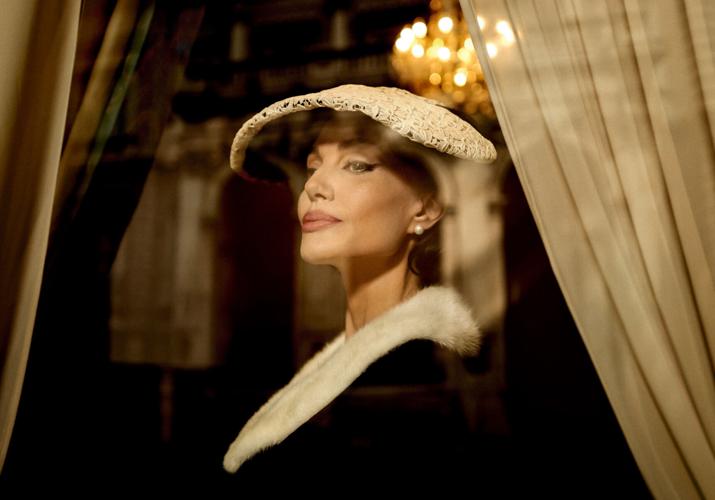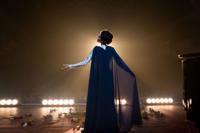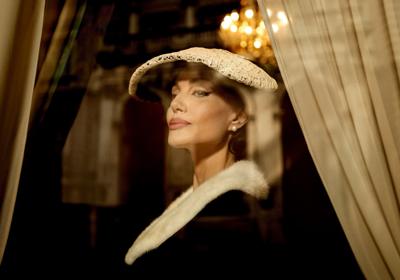Knowing nothing about opera, it's difficult to understand what the difference is between good opera singing and bad opera singing. The singing is all the same to me. This wouldn't be a problem, except this film wants us to realize that the protagonist who is known as one of the greatest opera singers is no longer able to do that thing anymore, at least not as well as she did. There are scenes showing her struggle to sing and I couldn't tell the difference. Thankfully, the script and the performance from Academy Award-winner, Angelina Jolie who stars as Maria Callas are enough to sell this idea that the woman in question is losing her voice and thus losing her art. The script from Steven Knight (Locke and Dirty Pretty Things) focuses on the last days of Callas and how most of her interactions in those moments were with her employees that worked in her house. It recalled Bill Condon's Gods and Monsters (1998), except Condon's film had a more explosive conflict to which it built and a relationship that developed on screen for which we could sympathize. This film seems to have the same thing, but it didn't quite feel the same.
Maria Callas is living in Paris in September, 1977. She lives in an almost palatial home, which appears to be within walking distance of the Eiffel Tower. We frequently see Maria going for walks and is easily able to pass the iconic French structure. It's clear that she's having health problems. Her butler and her maid are worried because she refuses to go to a doctor and she appears to be not taking her medication properly or she's taking medication that she's not supposed to be taking. She seems to be retired from her profession of singing. People keep asking her if she'll return to singing. She keeps saying no. Yet, she also keeps visiting a theater where she practices singing with a pianist on stage.

Kodi Smit-McPhee (The Power of the Dog and X-Men: Apocalypse) co-stars as Mandrax, a young filmmaker who comes to Maria's house and follows her around with a microphone and a cameraman recording what she says and does. However, what's revealed is that Mandrax isn't real. He's a figment of Maria's imagination. She's hallucinating, possibly due to the misuse of her medication or perhaps something else. I'm not exactly sure what the purpose of having this hallucination was. It could have been merely a device to get Maria talking about her life and experiences, as a way of being retrospective. Perhaps, it's based on some true story about Maria losing her mind, but the character of Mandrax wasn't needed.
This film is arguably part of a trilogy from Chilean filmmaker, Pablo Larraín, which began with Jackie (2016) and continued with Spencer (2021). In Jackie, that film centered on the former First Lady, Jacqueline Kennedy and it was structured around her being interviewed by a journalist. Larraín perhaps wanted to cap his trilogy with a similar structure. This one wanted to add the wrinkle of Maria questioning her sanity, as well as her staff doing the same. This is perhaps meant to endear us to her staff, which mainly consists of her butler and her maid.

Pierfrancesco Favino (Angels & Demons and Night at the Museum) also co-stars as Ferruccio, the butler in question. He comes across as not just a butler but as a brother who cares for his sibling. He's very attentive and almost doting. It's a shame that the film keeps him at a distance. It's purposeful, given how the character of Maria feels, but the film could've done more to explain why Ferruccio is so caring and doting other than just being a human in close proximity to another.
The film is really about the pain a person feels if they could no longer do their passion. It's the pain of feeling it slip away or the frustration that one is no longer able to do the thing they love. In the meantime, Larraín is continuing the same visual theme he started with Jackie and Spencer and that's the isolation and loneliness of certain powerful women. So many shots contain Maria being isolated and alone, floating about her house or even the streets of Paris. He even uses the 4:3 aspect ratio to underline that isolation or loneliness. Larraín also uses celluloid imagery to capture this idea of how she was seen or captured and what effect that had on her, living up to her "diva" status and mentality.

What connects this film to Jackie aside from the visual themes is the fact that Maria Callas and Jacqueline Kennedy shared a love interest. Here, Maria is seen meeting that love interest in black-and-white flashbacks. We see how charming he was and she was perhaps entranced by him. His absolute wealth probably didn't hurt either. Larraín's Jackie and Spencer were love stories, but both were also about the women to some degree or another grieving the loss of romantic love. This one is no different.
Rated R for language.
Running Time: 2 hrs. and 3 mins.
Available on Netflix.









